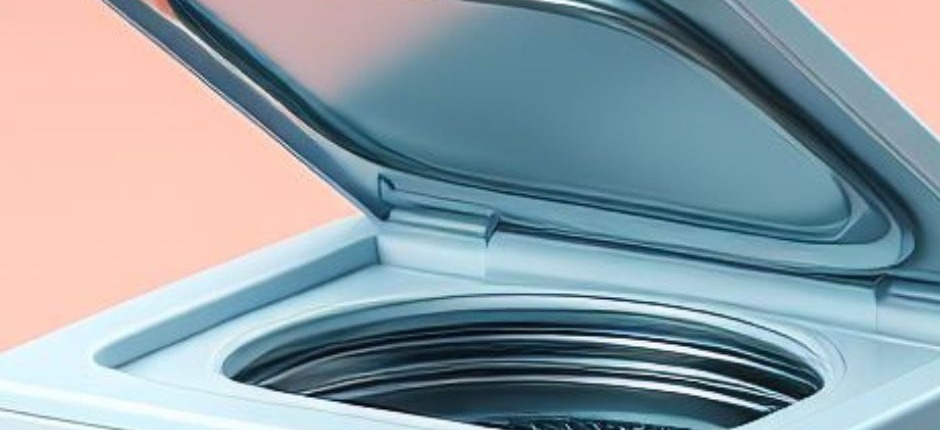How to replace pulsator assembly AGZ72909711 in an LG or Kenmore washer
Steven E / Thursday January 4, 2024
Is your washing machine making odd sounds or leaving your clothes less than clean? You might be facing a common issue with the pulsator assembly in your top-load LG or Kenmore washer. But don’t worry—our step-by-step guide and accompanying how-to video will show you exactly how to make this repair yourself, saving you both time and money.
The pulsator assembly on a top-load LG or Kenmore washer works together with the drive motor to rotate the basket and toss laundry around to clean it. But over years of use, the pulsator’s internal splines can strip or wear down to the point that the assembly no longer works as it should.
Some common symptoms of a bad pulsator are:
- Clothes that aren’t well-saturated, soaked or cleaned
- Grinding or knocking sounds while washing
Replacing the pulsator assembly is a straightforward repair that most owners can accomplish on their own with a replacement part and a few tools, which can save time and money.
Let’s walk through each step of the process from start to finish so you can restore your LG or Kenmore washing machine.
If you need to order pulsator assembly AGZ72909711, you can find it here. You can also find other LG or Kenmore washer parts by entering your model number at AppliancePartsPros.com.
Watch here: How To Replace LG/Kenmore Washer Pulsator Assembly AGZ72909711
What you need
- Flathead screwdriver – to remove the pulsator cap. Look for one with a thin 5-6mm blade.
- 10mm Socket wrench – to loosen and tighten the center bolt.
- Hammer or rubber mallet – for tapping the chisel to break apart stuck parts.
- Chisel set – to help crack and chip away hardened plastic debris.
- Needle-nose pliers – to grasp small broken shards for removal if needed.
- Flashlight
- Putty knife – to help pry or scrape embedded fragments loose from tight spaces.
- Vacuum – to suck up any debris that falls during repair work.
- Rags or paper towels – to clean surfaces before installing the new part.
- Insulated gloves
- Safety glasses
Safety precautions
When working on any appliance, always keep safety first to avoid personal injury or damage to the appliance or parts. Here are some safety tips to keep in mind:
- Always power off and unplug your washer or switch off the circuit breaker before attempting any maintenance or replacement work. This keeps you safe by preventing any risk of electric shock.
- If the washer has recently been used, give it plenty of time to cool down before working on it.
- Take your time and don’t rush while working to prevent accidents and personal injuries.
- Work in a well-lit area so you can clearly see and access appliance parts.
- Keep your workspace free of clutter and other obstacles. Keep children and pets away from the work area.
- Never work on internal parts with wet hands. Make sure the work area is completely dry.
- Check the user manual to see if there are specific installation or safety instructions related to your washer or replacement part.
- Be gentle when handling or removing washer parts. Excessive force might damage the washer or cause personal injury.
- Wear insulated work gloves to protect your hands from sharp metal parts and debris.
- When working with wires, avoid touching any exposed wires or terminals. If you need to touch a wire, use a non-conductive tool or wear insulating gloves to prevent electrical shock.
- Consider wearing safety glasses and/or a dust mask when working with chemicals, dust or a large amount of debris to prevent irritation or injury.
Replacement steps
- Find the washer’s power cord and unplug it from the wall outlet or find the circuit breaker box and switch off the appropriate circuit.
- Open the washer lid so you can access the inside of the drum.
- Remove the pulsator cap by inserting a flat-blade screwdriver into the three cutout openings around the rim of the cap. Pry upward to detach the locking tabs.
- Use a 10mm socket wrench to turn the bolt in the center of the cap counterclockwise. Unthread and fully remove it from the center hole.
- Pull straight up on the old pulsator assembly to remove it.
- If the pulsator is stuck or corroded in place, use a chisel at the edge of the central plastic insert piece and tap it carefully with a hammer or mallet to create cracks all around until the piece can be snapped or pried out.
- Remove any debris and the rest of the old pulsator assembly.
- Wipe away any residue with a rag to clean the mounting shaft.
- Align the splines on the new pulsator assembly with the shaft. Push straight down to seat it.
- Replace the 10mm screw to secure the assembly. Starting the bolt by hand, use a socket wrench to tighten it fully, turning it clockwise.
- Fit the pulsator cap back on by inserting the three posts into the holes and pressing them down.
- Close the washer lid, plug it back in, and run a test cycle to see if it’s fixed.
Washing machine maintenance tips
- Run a cleaning cycle with a washing machine cleaner, vinegar or baking soda to remove any built-up debris or odors.
- Periodically check the detergent dispenser for blockages or clogs and clean as needed.
- Inspect the water supply lines for any signs of mineral buildup, damage or leaks. Replace any damaged or leaking lines.
- Leave the washer open between cycles to prevent odd smells and mold buildup.
- Clean out the water inlet filter at least once every six months to remove debris that could negatively impact water flow.
- Clean lint and hair buildup from the drain pump filter every six months.
- Periodically check the drain hose for any signs of damage or leaks. Replace it if needed.
Additional information
Thanks for reading! We hope this article helped you replace the pulsator assembly in your LG or Kenmore washer.
If you still need some replacement parts, grab your model number and head over to AppliancePartsPros.com. We offer over two million parts and most orders arrive in two business days. If you need some help with finding the right part or placing an order, you can contact our team at 1 (877) 477-7278.
While you’re waiting for your new part to arrive, you can explore our DIY blog and watch thousands of video tutorials on our YouTube channel.
Be sure to follow us on Facebook, Twitter and Instagram to see our latest repair guides!
With nearly a decade of experience in providing top-notch customer service regarding appliance parts and repair, Steven enjoys sharing practical advice, troubleshooting tips, and interesting information to help readers stay informed.





